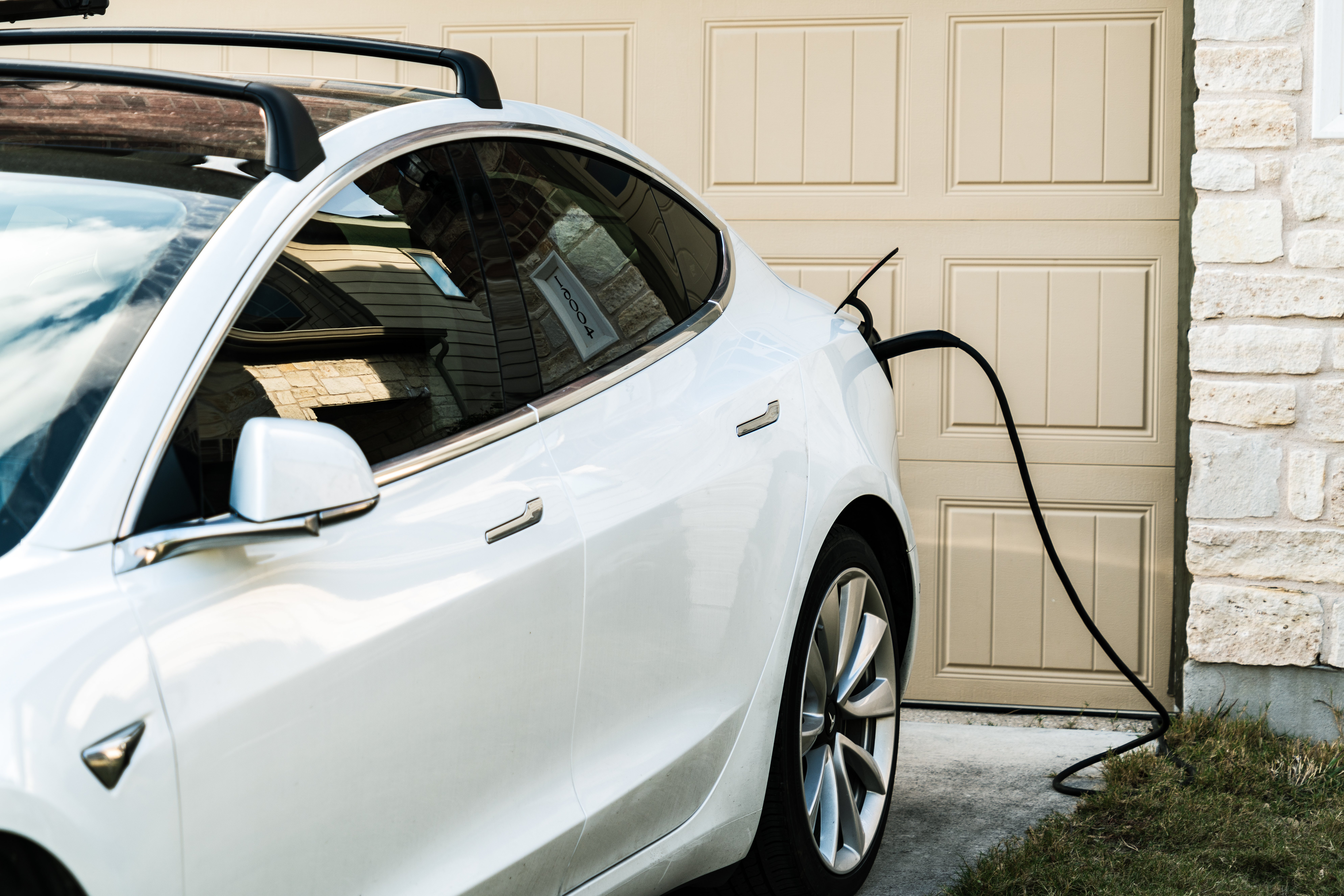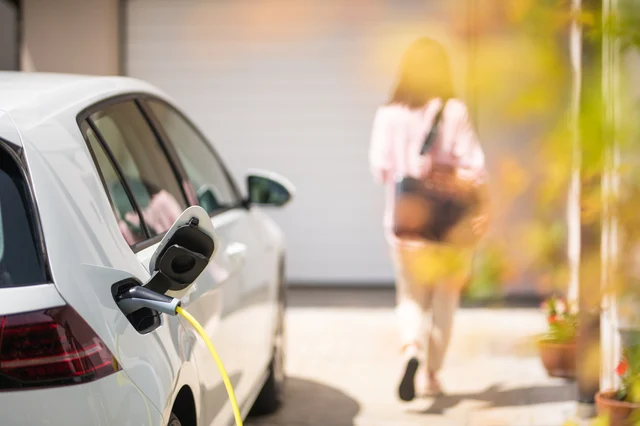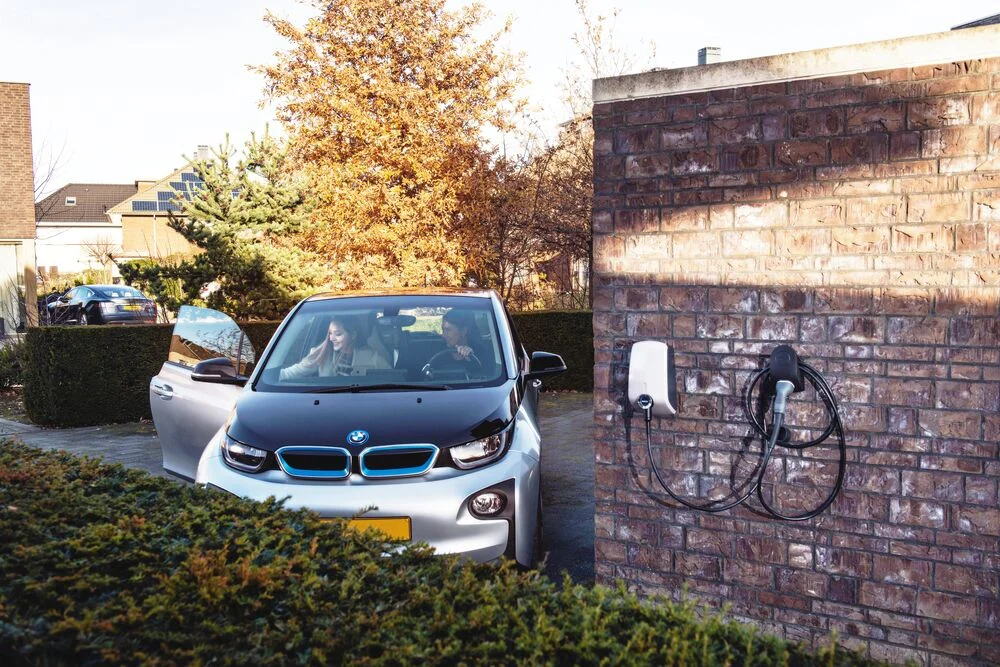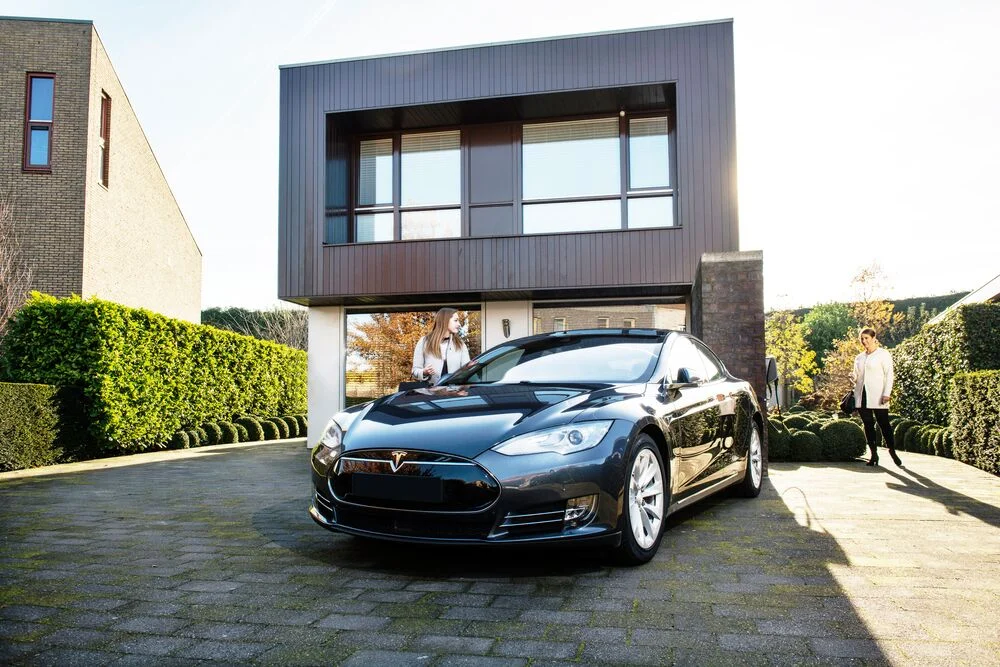Electric mobility is rapidly gaining traction worldwide, and charging an electric vehicle (EV) at home is becoming a common practice for many families. As convenient as it sounds, charging an EV differs significantly from filling up a gas-powered car at the pump. For beginners, the whole process might feel overwhelming, but with proper guidance, it becomes second nature.
In this article, we’ll walk you through every step of home EV charging, ensuring you can do so confidently. If you'd prefer to skip directly to a specific section, feel free to click on the links below:
- Charging at Home Without an EV Charger
- Charging at Home With an EV Charger

### How Do You Charge an Electric Car at Home?
Fundamentally, charging an EV resembles powering any electronic device with a battery—you plug it into a power source to replenish its energy. The simplest method is connecting your car to a standard wall outlet. This approach doesn’t require any extra equipment beyond the charging cable that usually comes with the vehicle. However, this is the slowest option, adding roughly four miles of range per hour. Additionally, there’s no protection against overloading your home’s electrical system, which could lead to costly damage.
For a safer, faster, and more efficient solution, investing in a dedicated home charging station is advisable. These units are installed by professionals and can handle higher charging loads, delivering significantly faster charging speeds compared to a regular outlet. While charging with a home station is three to seven times quicker than using a wall socket, public Level 3 DC fast chargers are still the fastest, capable of charging some vehicles in just 15 minutes.
Unfortunately, achieving such speeds at home isn’t feasible due to the limitations of your household electrical supply.

### Why Should You Charge Your Electric Car at Home?
Sixty-four percent of EV drivers prefer charging at home, and it’s easy to see why. It’s incredibly convenient—you simply plug your car in when you arrive home from work and let it charge overnight. Plus, charging at home is generally cheaper than public charging, as you avoid additional fees associated with public networks.
No doubt about it—home charging is one of the most practical ways to keep your EV running.
### Do You Need to Buy a Home EV Charging Station?
You might wonder whether you need to invest in a home charging station. The short answer is no, but there are important considerations. While you can charge your EV by plugging it into a standard outlet, the advantages of a home charging station—speed, safety, and convenience—are compelling.
Even though purchasing and installing a charging station involves a cost, it can be a worthwhile investment for daily use.

However, circumstances like limited space, inadequate wiring near your parking area, or not owning a designated parking spot might make installing a home charger impossible. In such cases, you still have alternatives for charging your EV outside your home.
---
### Charging at Home Without an EV Home Charging Station
If you choose to charge your EV without a dedicated charging station, all you need to do is plug the cable that came with your car into a standard outlet.
While straightforward, this method tends to be very slow and lacks safeguards against potential power overloads. For example, charging a mid-sized EV (with a 50 kWh battery, like a Tesla Model 3 Standard Range) using a 2.3 kW home outlet takes approximately 24 hours to reach an 80% charge.
Moreover, since EV charging consumes a large amount of energy, improper management can stress your home’s electrical circuits and even pose fire risks.

Without a charging station, your home’s electrical system may face unnecessary strain, making it critical to exercise caution during the charging process.
---
### Charging at Home With an EV Home Charging Station
Unlike standard outlets, home charging stations are specifically designed to handle high-energy demands safely and efficiently. They provide greater control over the charging process and deliver faster results. On average, a dedicated EV home charger can charge a mid-sized EV in just 3 to 7 hours.
This represents a significant improvement over charging via a standard socket, which can take at least three times longer.
#### The 5 Steps to Charge an Electric Car at Home
Although the exact procedure may vary depending on the charging station, brand, or car model, the general process involves the following steps:
1. **Retrieve the Charging Cable**
2. **Plug the Cable Into the Car**
3. **Connect the Cable to the Home Charging Station**
4. **Start the Charging Session**
5. **End the Charging Session**
---
#### Step 1: Retrieve the Charging Cable
After parking your car, the first step is finding the charging cable. Many home charging stations include a built-in cable, but others require you to attach your own. Typically, the charging cable provided by your EV’s manufacturer suffices—it’s usually stored in your car’s trunk.
A good tip: the type of cable and connector depends on your location.
---
#### Step 2: Plug the Cable Into the Car
Next, connect the car to the charger using the cable. Locate your car’s charging port, which is often near where a gas-powered vehicle’s fuel cap would be, on either side. Some manufacturers place the port in less conventional spots, like beneath the front badge.
---
#### Step 3: Connect the Cable to the Home Charging Station
If the cable isn’t already attached to the charging station, proceed by plugging it in. The charging station’s socket is usually visible, though you might need to remove a protective cover first.
---
#### Step 4: Begin the Charging Session
Once the car is connected to the station, it’s time to start the charging session. Depending on whether your station is open or closed, this process varies slightly.
An open station begins charging automatically upon connection, without requiring authentication. Most home chargers fall into this category, especially those in private settings.
Closed stations, however, demand user verification, often via an RFID card, fob, or a mobile app. Once authenticated, the session starts, and indicators on the station (typically colored LEDs) will change to reflect the status.
---
#### Step 5: Conclude the Charging Session
When your car reaches the desired charge level, it’s time to stop the session. During charging, the connector locks to the vehicle for safety reasons. To disconnect, you must first end the session, either via an app or by swiping your RFID card/fob. Once charging halts, the LEDs will change or stop blinking.
Finally, unplug the cable from the car and return it to the charging station (if built-in), or detach it completely and store it in your car if it’s removable.
You’re now fully charged and ready to drive!
While home charging may not be rocket science, it can feel unfamiliar to new EV owners. We hope these steps provide clarity and confidence.
For further insights into EV charging, check out our comprehensive EV charging guide, tailored for newcomers. Whether you’re exploring electric mobility or deepening your knowledge, this resource covers everything you need to know about EV charging.
Sinopec Pva 088-04,Sundy Pva 088-04,Changchun Pva Bp-04,Pvoh Pva Jp-04
Saint Petrochemicals Limited , https://www.saintpec.com